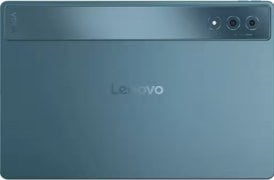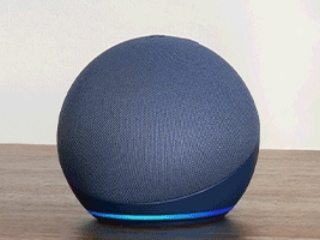- Home
- Internet
- Internet News
- H.266/VVC Video Compression Standard Debuts, Claimed to Cut Streaming Data Use by Half Even on 4K, 8K Videos
H.266/VVC Video Compression Standard Debuts, Claimed to Cut Streaming Data Use by Half Even on 4K, 8K Videos
The codec H.266/VVC has been announced by Germany’s Fraunhofer Heinrich Hertz Institute (HHI).

The new standard is aimed to help expand 4K and 8K video content consumption
H.266/Versatile Video Coding (VVC) — a new video compression standard, called — has been developed with the claim to offer a roughly 50 percent increase in data efficiency for streaming videos when compared to its predecessor H.265/HEVC. The new standard works with all video resolutions including standard definition (SD) and high definition (HD) as well as 4K and 8K. Also, it supports high dynamic range (HDR) and omnidirectional 360-degree video content. Through the latest development, users are aimed to receive a more efficient experience on streaming services, with significantly reduced buffering issues.
The codec H.266/VVC has been announced by Germany's Fraunhofer Heinrich Hertz Institute (HHI). It is touted to have been built in a collaboration with companies including Apple, Ericsson, Intel, Huawei, Microsoft, Qualcomm, and Sony.
As a successor to the existing H.265/HEVC, the new standard is claimed to reduce data consumption by half on streaming videos, without impacting their quality. The organisation explained that while a 90-minute ultra-high definition (4K) video based on H.265 requires about 10GB, the new technology reduces its size to 5GB without compressing its quality.
“Because H.266/VVC was developed with ultra-high-resolution video content in mind, the new standard is particularly beneficial when streaming 4K or 8K videos on a flat screen TV,” Fraunhofer HHI wrote in a press release.
It is important to point out that while the fresh move looks quite promising, content creators need compatible hardware to bring videos in the new video compression standard. Fraunhofer HHI mentioned that new chips supporting H.266/VVC are currently being designed. The institute is also set to publish the first software (for both encoder and decoder) to support the new codec, Dr. Thomas Schierl, head of the Video Coding and Analytics department at Fraunhofer HHI, said.
Companies in the past embraced H.265 and H.264 standards to offer efficiency gains to viewers. However, various content platforms have supported competing technologies including AV1 and VP9 in the past. This means that the new technology won't be used universally and may even not receive a mass adoption anytime in the near future.
That being said, the work towards the H.266/VVC shows that technology giants are planning to bring 4K and 8K video streaming to a large number of users. The standard also has support for 360-degree videos and would be a part of some augmented reality (AR) content to offer a high-quality immersive experience, without consuming a large amount of data.
Is Realme TV the best TV under Rs. 15,000 in India? We discussed this on Orbital, our weekly technology podcast, which you can subscribe to via Apple Podcasts or RSS, download the episode, or just hit the play button below.
Get your daily dose of tech news, reviews, and insights, in under 80 characters on Gadgets 360 Turbo. Connect with fellow tech lovers on our Forum. Follow us on X, Facebook, WhatsApp, Threads and Google News for instant updates. Catch all the action on our YouTube channel.
- Samsung Galaxy Unpacked 2025
- ChatGPT
- Redmi Note 14 Pro+
- iPhone 16
- Apple Vision Pro
- Oneplus 12
- OnePlus Nord CE 3 Lite 5G
- iPhone 13
- Xiaomi 14 Pro
- Oppo Find N3
- Tecno Spark Go (2023)
- Realme V30
- Best Phones Under 25000
- Samsung Galaxy S24 Series
- Cryptocurrency
- iQoo 12
- Samsung Galaxy S24 Ultra
- Giottus
- Samsung Galaxy Z Flip 5
- Apple 'Scary Fast'
- Housefull 5
- GoPro Hero 12 Black Review
- Invincible Season 2
- JioGlass
- HD Ready TV
- Laptop Under 50000
- Smartwatch Under 10000
- Latest Mobile Phones
- Compare Phones
- OPPO Reno 15c
- Redmi Note 15 5G
- Redmi Note 15 Pro 5G
- Redmi Note 15 Pro+ 5G
- Lava Play Max
- Poco C85 5G
- Honor Magic 8 Lite
- Jolla Phone
- Asus ProArt P16
- MacBook Pro 14-inch (M5, 2025)
- OnePlus Pad Go 2
- Poco Pad M1
- Just Corseca Skywatch Pro
- Honor Watch X5
- Acerpure Nitro Z Series 100-inch QLED TV
- Samsung 43 Inch LED Ultra HD (4K) Smart TV (UA43UE81AFULXL)
- Asus ROG Ally
- Nintendo Switch Lite
- Haier 1.6 Ton 5 Star Inverter Split AC (HSU19G-MZAID5BN-INV)
- Haier 1.6 Ton 5 Star Inverter Split AC (HSU19G-MZAIM5BN-INV)











